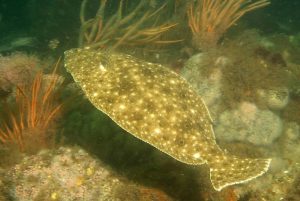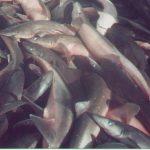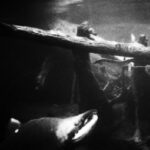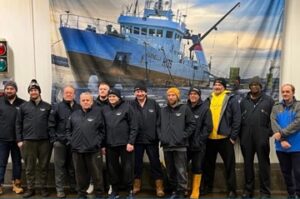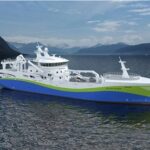Monthly Archives: August 2016
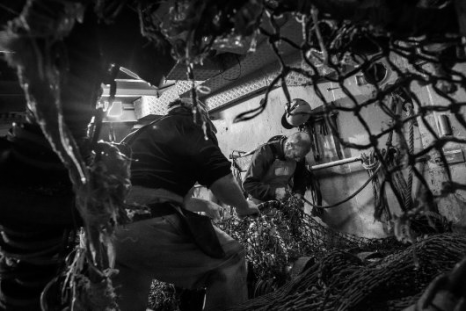
Fishermen in the north-east Atlantic: living at the pace of the trawl catch
Huge factory trawlers plough the various fisheries, depending on the product sought, to supply major distribution outlets. This large-scale commercial fishing, also known as industrial fishing, is heavily subsidised by public funds. The industrial trawlers of today are out-and-out floating factories where the work is wholly designed and organised around production line methods. The seafarers remain at their workplace for 27 days. During this time, their lives, eating and sleep patterns depend on the work to be done. The north-east Atlantic is the world’s fourth largest fishery. Mainly exploited by European ship owners, this area accounts for over 70 per cent of EU catches. Photojournalist Pierre Vanneste spent two 15-day stretches at sea with industrial fishermen, to report on the day-to-day reality of life on board. Read the story here 20:35
Zeldin: Congress needs to block president’s latest Marine Monument plan
 Recent Marine Monument designations proclaimed by the Obama Administration have been the largest in U.S. history. In 2016, President Obama declared a 490,000 square-mile area of water in the Pacific Ocean as a National Marine Monument after receiving little public input and through a process where transparency was severely lacking. As a result of this new monument, recreational fishing was severely limited and commercial fishing was completely banned, hurting fishermen in the Pacific Ocean. Now, important fishing areas in the Northwest Atlantic, where fishermen from Greenport, Montauk, and throughout the entire New York and New England region have worked for centuries, are under consideration for a National Marine Monument designation. As the president is pushing to apply this power to large areas of ocean in the Northwest Atlantic, he is threatening to shutdown thousands of square miles of ocean from Long Island fishermen. Read the rest here 15:55
Recent Marine Monument designations proclaimed by the Obama Administration have been the largest in U.S. history. In 2016, President Obama declared a 490,000 square-mile area of water in the Pacific Ocean as a National Marine Monument after receiving little public input and through a process where transparency was severely lacking. As a result of this new monument, recreational fishing was severely limited and commercial fishing was completely banned, hurting fishermen in the Pacific Ocean. Now, important fishing areas in the Northwest Atlantic, where fishermen from Greenport, Montauk, and throughout the entire New York and New England region have worked for centuries, are under consideration for a National Marine Monument designation. As the president is pushing to apply this power to large areas of ocean in the Northwest Atlantic, he is threatening to shutdown thousands of square miles of ocean from Long Island fishermen. Read the rest here 15:55
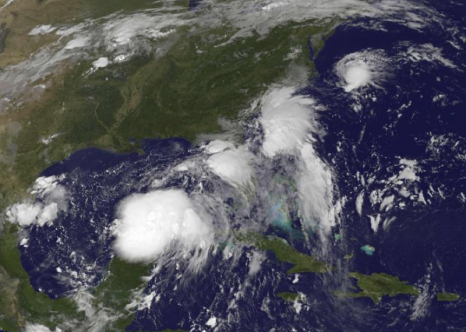
Florida and Hawaii brace as hurricane season hastens
Florida braces for life-threatening floods and fierce winds as Hawaii’s Big Island stares down the barrel of an encroaching hurricane. Forecasters issued a tropical storm warning on Wednesday for the Florida Gulf Coast. National Hurricane Center: ”Persons located within these areas should be prepared to take all necessary actions to protect life and property from rising water.” Florida Governor Rick Scott: Flooding, storm surge, fierce winds and tornadoes were all threats to the region. Could make landfall on Florida’s north-central Gulf Coast on Thursday. Resident on Hawaii’s Big Island warned of an encroaching hurricane expected to bring strong winds and heavy rains. National Weather Service (NWS): Hurricane Madeline [CAT 1] swirling about 235 miles (380 km), forecast to “pass dangerously close” on Wednesday. County of Hawaii: “Preparations to protect life and property should be completed by nightfall today.” Read the latest here 15:27
Athearn Marine Agency Boat of the Week: 37.5′ H & H Lobster boat, 300HP, 6 Cylinder John Deere
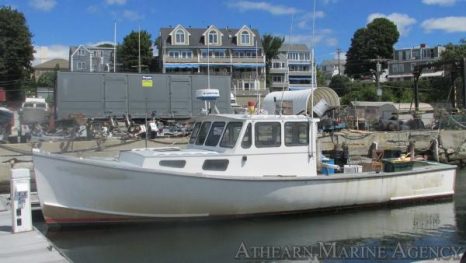 Specifications, information and 12 photo’s click here To see all the boats in this series, Click here 14:48
Specifications, information and 12 photo’s click here To see all the boats in this series, Click here 14:48
Bad outlook for upcoming Bering Sea crab fisheries
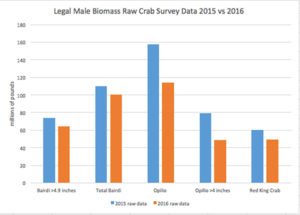 The summer survey results have not been good for either Bering Sea snow (opilio) or tanner (Bairdi) crab. For 2015-16, snow crab landings from both the IFQ and CDQ fisheries were 40.61 million pounds, a 40% cut from 67.9 million lbs in 2014-15. For Bairdi the 2015-16 quota was 19.64 million pounds, which helped make up some of the shortfall. But the snow crab market reacted quickly to the cut in Alaskan snow crab, and prices rose throughout the year, including when Canada’s larger fishery opened. Industry participants think 2016-17 may be worse. This has now been confirmed with the raw survey data just released by Dr. Bob Foy of the Kodiak Fisheries Science Laboratory showing that legal male biomass has declined in all of the major crab fisheries. Legal male biomass in the crab fisheries declined across the board, with the largest declines in Opilio. The survey also measures the abundance of female crabs; all these numbers go into determining appropriate fishing levels. Read the story here 13:43
The summer survey results have not been good for either Bering Sea snow (opilio) or tanner (Bairdi) crab. For 2015-16, snow crab landings from both the IFQ and CDQ fisheries were 40.61 million pounds, a 40% cut from 67.9 million lbs in 2014-15. For Bairdi the 2015-16 quota was 19.64 million pounds, which helped make up some of the shortfall. But the snow crab market reacted quickly to the cut in Alaskan snow crab, and prices rose throughout the year, including when Canada’s larger fishery opened. Industry participants think 2016-17 may be worse. This has now been confirmed with the raw survey data just released by Dr. Bob Foy of the Kodiak Fisheries Science Laboratory showing that legal male biomass has declined in all of the major crab fisheries. Legal male biomass in the crab fisheries declined across the board, with the largest declines in Opilio. The survey also measures the abundance of female crabs; all these numbers go into determining appropriate fishing levels. Read the story here 13:43
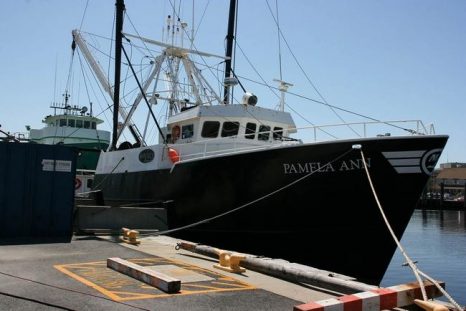
As climate changes, so do fish populations – but not rules for catching them
The problem isn’t the fish. There are plenty of fish – but they’re the wrong fish. Warming water and other shifting ocean conditions have pushed the longtime mainstays of Connecticut fishing, like winter flounder and most notably lobster, north to deeper and colder waters. In their places are species that had been more common further south, also moving north in search of more hospitable conditions. But the way the fish management and quota systems work on the East Coast, fishermen in New England can’t catch many of those fish. Instead, trawlers from North Carolina are traveling all the way to the ocean waters in Connecticut’s backyard and catching what used to be off their own coast – summer flounder, scup and the very valuable black sea bass – while Connecticut fishermen can only watch; throwback tons of fish – most of which will die; or risk a costly, difficult and long trip to where the fish they are allowed to catch in larger numbers are now. Read the story here 13:21
Hawaii fishermen upset at Hawaii monument expansion
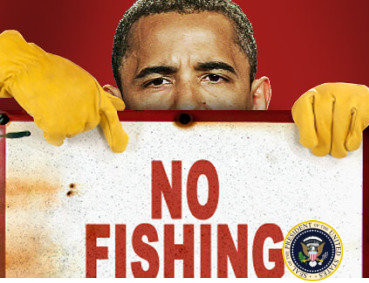 President Barack Obama is to travel to Hawaii this week to mark the new designation of the expanded Papahanaumokuakea Marina National Monument which he signed despite strong opposition from the Hawaii fishing industry. President Obama who was born in Hawaii is expected to cite the need to protect public lands and waters from climate change. The Western Pacific fishery Management Council of which American Samoa is a member voiced disappointment with Obama’s decision, saying it “serves a political legacy” rather than a conservation benefit. Council member from American Samoa Taulapapa Willie Sword told KHJ News in a recent interview the territory should be concerned with the Hawaii monument expansion because “we could be next.” There was also opposition from the fishing industry in Hawaii. Sean Martin, the president of the Hawaii Longline Association, said his organization was disappointed Obama closed an area nearly the size of Alaska without a public process. “This action will forever prohibit American fishermen from accessing those American waters. Quite a legacy indeed,” he said in an email to The Associated Press. The Pew Charitable Trusts helped lead the push to expand the monument. Read the rest here 11:39
President Barack Obama is to travel to Hawaii this week to mark the new designation of the expanded Papahanaumokuakea Marina National Monument which he signed despite strong opposition from the Hawaii fishing industry. President Obama who was born in Hawaii is expected to cite the need to protect public lands and waters from climate change. The Western Pacific fishery Management Council of which American Samoa is a member voiced disappointment with Obama’s decision, saying it “serves a political legacy” rather than a conservation benefit. Council member from American Samoa Taulapapa Willie Sword told KHJ News in a recent interview the territory should be concerned with the Hawaii monument expansion because “we could be next.” There was also opposition from the fishing industry in Hawaii. Sean Martin, the president of the Hawaii Longline Association, said his organization was disappointed Obama closed an area nearly the size of Alaska without a public process. “This action will forever prohibit American fishermen from accessing those American waters. Quite a legacy indeed,” he said in an email to The Associated Press. The Pew Charitable Trusts helped lead the push to expand the monument. Read the rest here 11:39
Northeast Fisheries Science Center is looking for one to three commercial trawl vessels
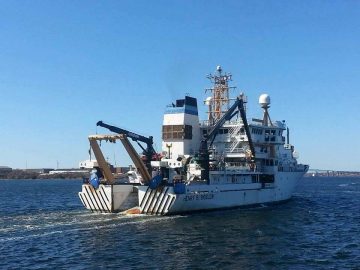 Northeast Fisheries Science Center (NEFSC) is seeking 1 – 3 commercial trawl fishing vessel partners to participate in a project related to NEFSC bottom trawl survey operations The goal of the project is to help assess the potential for collaborative industry-based trawl sampling to contribute to stock assessments of commercially important fish populations in waters of the Northwest and mid-Atlantic ocean. The project will investigate the use of industry vessels to supplement NEFSC survey sampling, and/or provide survey coverage if the FSV Bigelow is unavailable or competing uses restrict its availability for the standardized NEFSC bottom trawl survey. One to three vessels will be selected to help assess the capability of industry vessels to provide the standardized tow dynamics required to supplement the existing federal bottom trawl survey conducted on the FSV Bigelow. Read the notice, check the specs here 09:21
Northeast Fisheries Science Center (NEFSC) is seeking 1 – 3 commercial trawl fishing vessel partners to participate in a project related to NEFSC bottom trawl survey operations The goal of the project is to help assess the potential for collaborative industry-based trawl sampling to contribute to stock assessments of commercially important fish populations in waters of the Northwest and mid-Atlantic ocean. The project will investigate the use of industry vessels to supplement NEFSC survey sampling, and/or provide survey coverage if the FSV Bigelow is unavailable or competing uses restrict its availability for the standardized NEFSC bottom trawl survey. One to three vessels will be selected to help assess the capability of industry vessels to provide the standardized tow dynamics required to supplement the existing federal bottom trawl survey conducted on the FSV Bigelow. Read the notice, check the specs here 09:21
Start of the wave? Sudden boatloads of Chinook salmon off Alberni raise hopes
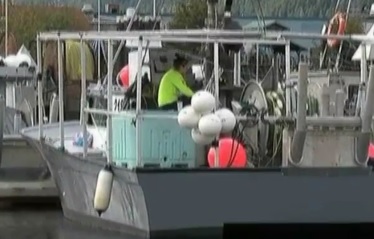 Up and down the West Coast commercial fishermen are filling harbours waiting and hoping for an opening to fish Chinook salmon. Despite preliminary estimates of a huge return, the best in decades, the fish haven’t shown up as predicted so nets that are many people’s livelihoods haven’t even gone into the water this season. But some optimism is showing up now for those who’ve been struggling. Surrounded by boats in Port Alberni’s harbour all waiting for the commercial opening for the Chinook salmon fishery Stephanie Cook is doing what she can to stop worrying. “It’s very stressful, very stressful wondering if you’re going to catch any or if there’s any out there,” says Cook aboard her boat. The 30-year-old from Alert Bay has never faced a year like this before. One that’s testing even the most experienced on this coast. Video, read the story here 08:47
Up and down the West Coast commercial fishermen are filling harbours waiting and hoping for an opening to fish Chinook salmon. Despite preliminary estimates of a huge return, the best in decades, the fish haven’t shown up as predicted so nets that are many people’s livelihoods haven’t even gone into the water this season. But some optimism is showing up now for those who’ve been struggling. Surrounded by boats in Port Alberni’s harbour all waiting for the commercial opening for the Chinook salmon fishery Stephanie Cook is doing what she can to stop worrying. “It’s very stressful, very stressful wondering if you’re going to catch any or if there’s any out there,” says Cook aboard her boat. The 30-year-old from Alert Bay has never faced a year like this before. One that’s testing even the most experienced on this coast. Video, read the story here 08:47
Starving cod – Harvesters reporting catching thin cod with little in their digestive systems
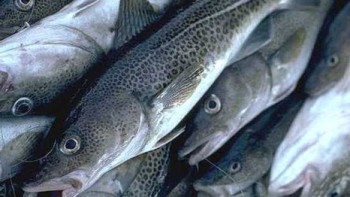 Scientists with the Department of Fisheries and Oceans are keeping a close eye on cod stocks in southern Labrador, in the wake of reports from harvesters catching fish in rough shape this season. “What we’re catching here now, it’s very poor. There’s nothing in the puttocks [digestive tract] of the fish,” fisherman Warrick Chubbs told CBC’s The Broadcast. “Only little jellyfish, the size of your thumbnail, and not many of them. The very odd one, you’ll see maybe one or two rotten shrimp.” Chubbs isn’t alone in his concerns. “It certainly seems like this year in southern Labrador the cod are not in very good condition at all,” said DFO research scientist John Brattey, who is hearing multiple similar reports from the region. Read the story here 08:26
Scientists with the Department of Fisheries and Oceans are keeping a close eye on cod stocks in southern Labrador, in the wake of reports from harvesters catching fish in rough shape this season. “What we’re catching here now, it’s very poor. There’s nothing in the puttocks [digestive tract] of the fish,” fisherman Warrick Chubbs told CBC’s The Broadcast. “Only little jellyfish, the size of your thumbnail, and not many of them. The very odd one, you’ll see maybe one or two rotten shrimp.” Chubbs isn’t alone in his concerns. “It certainly seems like this year in southern Labrador the cod are not in very good condition at all,” said DFO research scientist John Brattey, who is hearing multiple similar reports from the region. Read the story here 08:26
Never Frozen: Why It’s So Hard to Find North Carolina Seafood
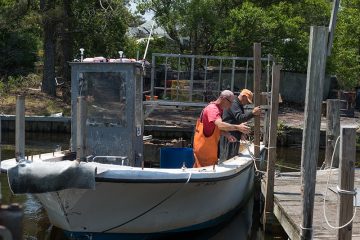 Two and a half years ago, Sean Schussler quit a six-figure job as vice president of sales for a printing company to start a seafood market. Catch On Seafood is a small shop in Plaza Midwood, a trendy Charlotte neighborhood where people drive eco-friendly cars with bumper stickers that read “Eat Local.” Schussler started the business with one guarantee: Any piece of fish he sells has never been frozen. It’s an honorable promise that’s difficult to honor. As seafood moves from the coast to the city, it passes through several hands, and often the chain is littered with stories and lies. Even some of the most highly regarded families on the North Carolina coast have sold their businesses to big companies with big distribution operations that make tracing the product impossible. Read the story here 07:52
Two and a half years ago, Sean Schussler quit a six-figure job as vice president of sales for a printing company to start a seafood market. Catch On Seafood is a small shop in Plaza Midwood, a trendy Charlotte neighborhood where people drive eco-friendly cars with bumper stickers that read “Eat Local.” Schussler started the business with one guarantee: Any piece of fish he sells has never been frozen. It’s an honorable promise that’s difficult to honor. As seafood moves from the coast to the city, it passes through several hands, and often the chain is littered with stories and lies. Even some of the most highly regarded families on the North Carolina coast have sold their businesses to big companies with big distribution operations that make tracing the product impossible. Read the story here 07:52
Undersea monument plan advocates hear fishermen’s concerns! But,,,,,,,,
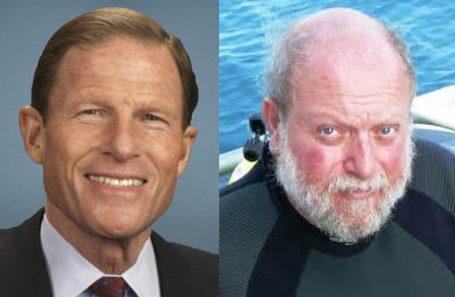 U.S. Sen. Richard Blumenthal, D-Conn., and Peter Auster, retired University of Connecticut marine science professor and currently the senior research scientist at the Mystic Aquarium, made their case for declaring the New England Coral Canyons and Seamounts as a Marine National Monument during a program Tuesday evening at the aquarium. “This would be the first marine monument in the Atlantic,” said Blumenthal, who is leading the entire Connecticut congressional delegation in advocating for the designation. Blumenthal, saying he is “sensitive to the economic interests of our fishing industry,” But commercial fishing groups say the designation would cut off their access to productive areas for red crab, swordfish, tuna and offshore lobster harvests, among other species. “Those areas have been used for hundreds of years,” said Joe Gilbert, owner of Empire Fisheries,,, “We feel disenfranchised at this point,” Gilbert said. Read the story here 05:56
U.S. Sen. Richard Blumenthal, D-Conn., and Peter Auster, retired University of Connecticut marine science professor and currently the senior research scientist at the Mystic Aquarium, made their case for declaring the New England Coral Canyons and Seamounts as a Marine National Monument during a program Tuesday evening at the aquarium. “This would be the first marine monument in the Atlantic,” said Blumenthal, who is leading the entire Connecticut congressional delegation in advocating for the designation. Blumenthal, saying he is “sensitive to the economic interests of our fishing industry,” But commercial fishing groups say the designation would cut off their access to productive areas for red crab, swordfish, tuna and offshore lobster harvests, among other species. “Those areas have been used for hundreds of years,” said Joe Gilbert, owner of Empire Fisheries,,, “We feel disenfranchised at this point,” Gilbert said. Read the story here 05:56
Deadliest Catch Captains Making Mischief for charity at The Captain’s Whiskey Slam
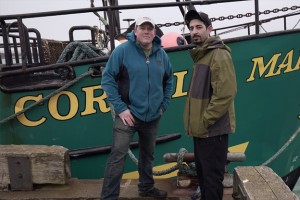 In what may very well be the most chest-hair-growing partnership in modern memory, Fremont Mischief Distillery has teamed up with Deadliest Catch celebrity crab captains Sig Hansen and Casey McManus, as well as co-captain Josh Harris, to make whiskey for charity at The Captain’s Whiskey Slam. Fremont Mischief’s new rye whiskey, Storm Tossed Rye, is a special batch that has been barrel-aged aboard Sig Hansen’s Northwestern and Casey McManus’ and Josh Harris’ Cornelia Marie. The whiskey batch, aged on the two different boats, is going head-to-head in true Deadliest Catch competition style. The goal is to sell all of the Storm Tossed Ryewhiskey between the release date, August 20, and October 1 in order to donate $40,000 to Seattle’s Fisherman Memorial and Sea Scouts’ Propeller and Yankee Clipper educational vessel efforts. The vision for the event comes from Doug Dixon, manager of Pacific Fishermen Shipyard, and Mike Sherlock, owner of Fremont Mischief Distillery and 29-year veteran of commercial fishing. Read the story here 20:34
In what may very well be the most chest-hair-growing partnership in modern memory, Fremont Mischief Distillery has teamed up with Deadliest Catch celebrity crab captains Sig Hansen and Casey McManus, as well as co-captain Josh Harris, to make whiskey for charity at The Captain’s Whiskey Slam. Fremont Mischief’s new rye whiskey, Storm Tossed Rye, is a special batch that has been barrel-aged aboard Sig Hansen’s Northwestern and Casey McManus’ and Josh Harris’ Cornelia Marie. The whiskey batch, aged on the two different boats, is going head-to-head in true Deadliest Catch competition style. The goal is to sell all of the Storm Tossed Ryewhiskey between the release date, August 20, and October 1 in order to donate $40,000 to Seattle’s Fisherman Memorial and Sea Scouts’ Propeller and Yankee Clipper educational vessel efforts. The vision for the event comes from Doug Dixon, manager of Pacific Fishermen Shipyard, and Mike Sherlock, owner of Fremont Mischief Distillery and 29-year veteran of commercial fishing. Read the story here 20:34
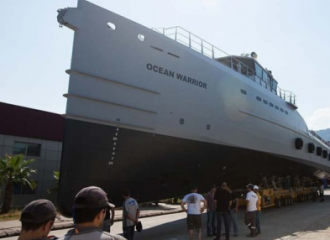
Sea Shepherd launches new ship that can ‘outrun’ Japanese whalers
“For the first time we will have the speed to catch and outrun the Japanese harpoon ships, knowing speed can be the deciding factor when saving the lives of whales in the Southern Ocean,” Alex Cornelissen, Sea Shepherd Global CEO, said in a statement. The new ship — dubbed “Ocean Warrior” — is 54 meters (177 feet) long, displaces 439 tons and can reach speeds of 25 knots and higher. Japanese whaling ships are estimated to reach speeds of up to 22 knots, and Sea Shepherd’s previous ships could only reach 15 knots. A deck area also enables ship operators to dispatch small boat operations and support a helicopter. The ship was built in Turkey by Dutch shipbuilder Damen from an 8.3 million euro ($9 million) fund awarded to Sea Shepherd by the Dutch, UK and Swedish lotteries. Video, Read the rest here 19:34
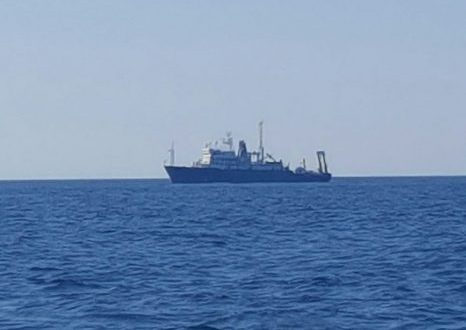
We were here first
So this is what the future looks like in late August from the deck of a fishing vessel south of the Vineyard. This ship is doing a survey looking for good bottom in which to plant offshore wind turbines. Fishermen are looking at this in the same way the Plains Indians probably looked at the Iron Horse. They may not have been up on the marvels of technology but I believe when they heard that whistle blowing they had a gut feeling that there were going to be winners and losers in the new order and they had no illusions about which end of the deal they would probably be getting. This particular area of the ocean is important to squid fishermen and if the turbines go in the fishermen will no longer be able to fish there. These remaining groundfish boats have already been squeezed out of other fisheries given the small quota they are allowed to catch and this represents another threat to their livelihood and way of life.
Promote greater scientific and socio-economic understanding of our nation’s fisheries and our fishing industry
Support the Center for Sustainable Fisheries www.centerforsustainablefisheries.org
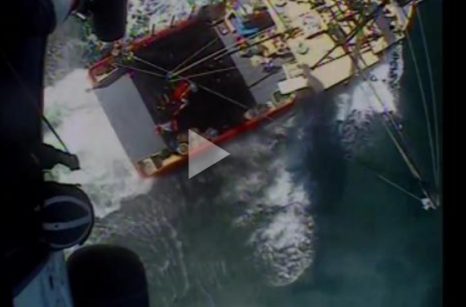
Updated: Video available – Coast Guard medevacs wounded lobsterman
A Coast Guard helicopter crew from Air Station Cape Cod medically evacuated an injured 41-year-old lobsterman Tuesday 130 nautical miles east of Cape Cod. At about 10:15 a.m., a crewmember aboard the lobster boat Eagle contacted watchstanders at the First Coast Guard District command center requesting assistance for a crewmember who had accidentally been impaled. A Coast Guard flight surgeon recommended a medevac and Air Station Cape Cod launched an MH-60 Jayhawk helicopter at about 11 a.m. The air crew arrived on scene, hoisted the man, and is currently in transit to Cape Cod Hospital. More details when available. 14:51 Watch the video here
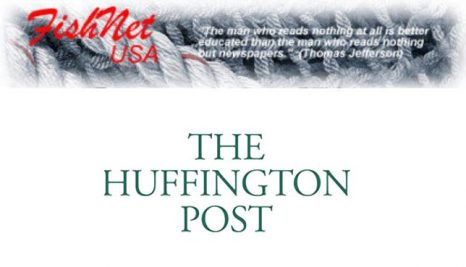
When it comes to fish and fishing Huffington Post is all wet – Nils E. Stolpe/FishNet USA
Last week Dana Ellis Hunnes, a Huffington Post blogger, managed to package in just 700 words more false, misleading, distorted and just plain wrong information about fish and seafood production than I’ve ever seen in works with far more words by professional anti-fishing activists. Addressing her inaccuracies on a point by point basis: Sustainable Fish Do Not Exist – Starting out with her title, the Merriam-Webster definition of sustainable is “able to be used without being completely used up or destroyed, involving methods that do not completely use up or destroy natural resources, able to last or continue for a long time.” The concept of renewable resources revolves around the sustainable utilization of those resources. Click here to read the full article 13:27
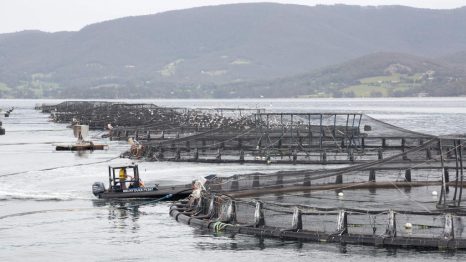
Meanwhile, in Tasmania – Drag fish farm regulation into 21st century
Sea based fish farms dump tonnes of faeces into the water. Think of them as a large toilet that does not flush. I cannot think of an industry in Tasmania other than aquaculture that is allowed to dump an unlimited amount of pollution in our waterways. Not only is there no limit on the amount of faeces salmon farms can dump in coastal waters, Tasmania also lacks science-based regulations to determine which parts of our coastline are suitable for salmon farms. International research shows that if you put fish farms in bays and harbours, where the water is shallow and current speed is low, fish faeces accumulates under cages, killing everything below them. Nitrogen discharged into the water column creates risk of harmful algal blooms, like the types we have seen worsening with increased salmon farms in the Huon and D’Entrecasteaux Channel. Other countries have responded to this research by offering incentives to move farming onshore. Read the story here 12:46
Controversial fish farm footage released
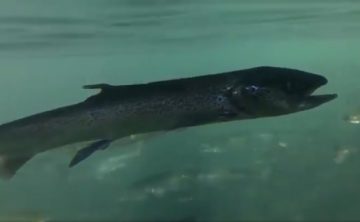 A B.C. environmentalist claims she has shocking new evidence that B.C. fish farms are carrying diseases that could potentially infect wild salmon. Earlier this summer, biologist Alexandra Morton and members of local First Nations visited a salmon farm in the Broughton Archipelago on B.C.’s central coast. “I had 10 minutes to stick my camera under the water and look at these fish and this is what I saw,” Morton said. “I was stunned. I saw a fish go by with a big tumour on his head.” Then she saw a salmon that was so emaciated that it hardly looked like a salmon at all. Video, read the story here 12:19
A B.C. environmentalist claims she has shocking new evidence that B.C. fish farms are carrying diseases that could potentially infect wild salmon. Earlier this summer, biologist Alexandra Morton and members of local First Nations visited a salmon farm in the Broughton Archipelago on B.C.’s central coast. “I had 10 minutes to stick my camera under the water and look at these fish and this is what I saw,” Morton said. “I was stunned. I saw a fish go by with a big tumour on his head.” Then she saw a salmon that was so emaciated that it hardly looked like a salmon at all. Video, read the story here 12:19
DFO seized, returned 1,350 pounds of lobster into the Annapolis Basin
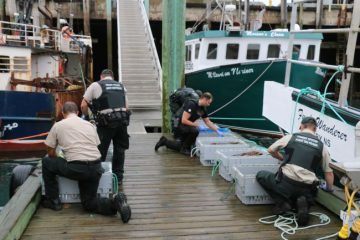 A half dozen officers with the Department of Fisheries and Oceans Canada took a dozen crates of lobster onto a floating dock at the Digby wharf Aug. 26, took the bands off the lobster and put the crustaceans back in the water. Fishery officer Jacklyn Titus said officers seized the 1,350 pounds of lobster earlier on Aug. 26 after an investigation on board a fishing vessel in Margaretville involved with the Aboriginal Food Fishery. Six people were arrested as a result of that investigation. All were later released. Titus says charges are pending. Click here for more photo 12:00
A half dozen officers with the Department of Fisheries and Oceans Canada took a dozen crates of lobster onto a floating dock at the Digby wharf Aug. 26, took the bands off the lobster and put the crustaceans back in the water. Fishery officer Jacklyn Titus said officers seized the 1,350 pounds of lobster earlier on Aug. 26 after an investigation on board a fishing vessel in Margaretville involved with the Aboriginal Food Fishery. Six people were arrested as a result of that investigation. All were later released. Titus says charges are pending. Click here for more photo 12:00
UMaine scientist – population size of scallops affects fertilization success
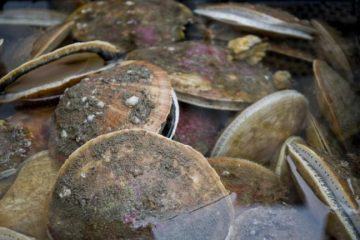 Scallop gonads may seem like fun and games to Skylar Bayer given that her missing samples landed her on “The Colbert Report” in 2013. But scallops are no laughing matter to Bayer. “When I was deciding on a Ph.D. project to pursue, I chose to work on a species that is commercially important and relevant to people’s daily life,” says Bayer, who is based at the University of Maine Darling Marine Center in Walpole. “Giant sea scallops in Maine seemed extraordinarily relevant.” In 2015, Maine fishermen brought in 452,672 pounds of scallop meat valued at $12.70 per pound — the highest in years. But scallops haven’t always done well in Maine and beyond. In the 1990s, after huge reductions in multiple fishery landings, including giant sea scallops, NOAA regulators instituted large fishing closures to try to bolster groundfish stocks. After four years, scallop stocks had increased 14 times what they were prior to the closure. Seeking a similar success story, Maine followed suit in 2009 and instituted a three-year scallop fishing closure. Read the story here 10:38
Scallop gonads may seem like fun and games to Skylar Bayer given that her missing samples landed her on “The Colbert Report” in 2013. But scallops are no laughing matter to Bayer. “When I was deciding on a Ph.D. project to pursue, I chose to work on a species that is commercially important and relevant to people’s daily life,” says Bayer, who is based at the University of Maine Darling Marine Center in Walpole. “Giant sea scallops in Maine seemed extraordinarily relevant.” In 2015, Maine fishermen brought in 452,672 pounds of scallop meat valued at $12.70 per pound — the highest in years. But scallops haven’t always done well in Maine and beyond. In the 1990s, after huge reductions in multiple fishery landings, including giant sea scallops, NOAA regulators instituted large fishing closures to try to bolster groundfish stocks. After four years, scallop stocks had increased 14 times what they were prior to the closure. Seeking a similar success story, Maine followed suit in 2009 and instituted a three-year scallop fishing closure. Read the story here 10:38
Gov. Scott Walker Confident New Lake Superior Fishing Agreement Will Be Reached
 Gov. Scott Walker got a closer look at state and commercial fisheries Monday when his tour of northern Wisconsin made a stop at Lake Superior’s Apostle Islands. During the visit, Walker acknowledged recent discussions to reach a new fishing agreement between the state Department of Natural Resources and local tribes, after a 10-year-old contract expired last year. Fishing in the lake is jointly managed by the state, the Bad River Band of Lake Superior Tribe of Chippewa Indians and the Red Cliff Band of Lake Superior Chippewa. Some sport and commercial fishermen are frustrated by state rules that don’t apply to tribes. The chairman of the Great Lakes Indian Fish and Wildlife Commission has said any suggestion that tribes are depleting the resource is 100 percent false. Read the story here 09:40
Gov. Scott Walker got a closer look at state and commercial fisheries Monday when his tour of northern Wisconsin made a stop at Lake Superior’s Apostle Islands. During the visit, Walker acknowledged recent discussions to reach a new fishing agreement between the state Department of Natural Resources and local tribes, after a 10-year-old contract expired last year. Fishing in the lake is jointly managed by the state, the Bad River Band of Lake Superior Tribe of Chippewa Indians and the Red Cliff Band of Lake Superior Chippewa. Some sport and commercial fishermen are frustrated by state rules that don’t apply to tribes. The chairman of the Great Lakes Indian Fish and Wildlife Commission has said any suggestion that tribes are depleting the resource is 100 percent false. Read the story here 09:40
Twitter users upset with the Cuomo brothers, saying the two fished a threatened species and should be ashamed of their actions.
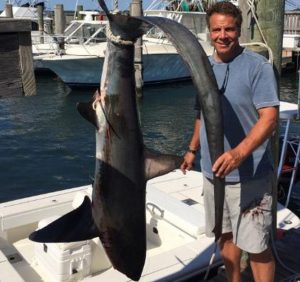 New York Governor Andrew Cuomo faced quite a bit of Twitter backlash after posing with the more than 150-pound thresher shark he caught off the coast of Long Island. His brother, CNN anchor Chris Cuomo, posted a photo of the fishing group on Instagram. National Oceanic and Atmospheric Administration determined threshers arenot at risk of extinction. But that didn’t seem to curb public opinion. In response to the controversy, a representative for Governor Cuomo told the New York Post, “This is an edible game fish that is indigenous to New York waters, and catching them is allowable under both state and federal regulations.” In 2013, Governor Cuomo was heralded for his decision to ban the possession and sale of shark fins — a popular delicacy in New York’s Chinatown. Read the rest here 08:43
New York Governor Andrew Cuomo faced quite a bit of Twitter backlash after posing with the more than 150-pound thresher shark he caught off the coast of Long Island. His brother, CNN anchor Chris Cuomo, posted a photo of the fishing group on Instagram. National Oceanic and Atmospheric Administration determined threshers arenot at risk of extinction. But that didn’t seem to curb public opinion. In response to the controversy, a representative for Governor Cuomo told the New York Post, “This is an edible game fish that is indigenous to New York waters, and catching them is allowable under both state and federal regulations.” In 2013, Governor Cuomo was heralded for his decision to ban the possession and sale of shark fins — a popular delicacy in New York’s Chinatown. Read the rest here 08:43
More fishermen have lost their lives in 2016 than in whole of 2015
 Simon Potten, Head of Safety, Training and Services reacts to the publication of the MAIB’s Annual Report and the steps Seafish are taking to tackle its tragic findings. The publication of the Marine Accident Investigation Branch’s (MAIB) Annual Report for 2015 provides an opportunity for the fishing industry and all those actively trying to improve fishing safety to take stock of how well we are doing, he said. The two most reliable indicators of fishing safety are the number of fishing vessels lost and, tragically, the number of fishermen lost. In 2015, 13 fishing vessels were lost, representing 0.23% of the fleet. What is more saddening is that more fishermen have lost lives in 2016 already, than in the whole of 2015, which we revealed last month. This is unacceptable and it is vital that the industry as a whole do more to improve the safety record of the fishing industry. Read the story here 07:41
Simon Potten, Head of Safety, Training and Services reacts to the publication of the MAIB’s Annual Report and the steps Seafish are taking to tackle its tragic findings. The publication of the Marine Accident Investigation Branch’s (MAIB) Annual Report for 2015 provides an opportunity for the fishing industry and all those actively trying to improve fishing safety to take stock of how well we are doing, he said. The two most reliable indicators of fishing safety are the number of fishing vessels lost and, tragically, the number of fishermen lost. In 2015, 13 fishing vessels were lost, representing 0.23% of the fleet. What is more saddening is that more fishermen have lost lives in 2016 already, than in the whole of 2015, which we revealed last month. This is unacceptable and it is vital that the industry as a whole do more to improve the safety record of the fishing industry. Read the story here 07:41
Department of Fisheries and Oceans Rejects COSEWIC’s Species-at-risk designation of Atlantic bluefin tuna
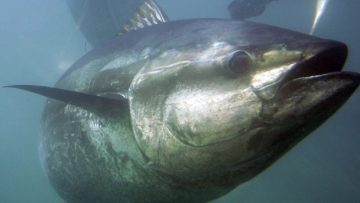 Canada’s Department of Fisheries and Oceans has rejected advice to list the Atlantic bluefin tuna as an endangered species. The long-awaited recommendation should preserve the region’s $10-million bluefin tuna fishery, industry representatives say. The department says western Atlantic bluefin tuna stocks have been rebuilding since 2011, when the Committee on the Status of Endangered Wildlife in Canada said tuna should be listed as an endangered species under federal species-at-risk legislation. That would have made it illegal to kill, harm or capture the giant fish. Glenn MacKenzie of the Gulf Nova Scotia Tuna Association said he was “very relieved.” He’s one of 135 commercial tuna fishermen who fish from the Nova Scotia side of the Gulf of Saint Lawrence. Read the story here 19:27
Canada’s Department of Fisheries and Oceans has rejected advice to list the Atlantic bluefin tuna as an endangered species. The long-awaited recommendation should preserve the region’s $10-million bluefin tuna fishery, industry representatives say. The department says western Atlantic bluefin tuna stocks have been rebuilding since 2011, when the Committee on the Status of Endangered Wildlife in Canada said tuna should be listed as an endangered species under federal species-at-risk legislation. That would have made it illegal to kill, harm or capture the giant fish. Glenn MacKenzie of the Gulf Nova Scotia Tuna Association said he was “very relieved.” He’s one of 135 commercial tuna fishermen who fish from the Nova Scotia side of the Gulf of Saint Lawrence. Read the story here 19:27
White Marlin Open Polygraph fail could boost N.J. fishermen’s Tuna $767,091winnings up another $2.3M!
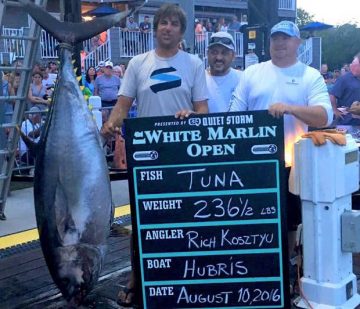 A trio of New Jersey fisherman could land $2.3 million more in prize money for the record 236.5-pound tuna they caught earlier this month in Maryland. Brian Suschke, a Trenton police sergeant and Rich Kosztyu, a Trenton firefighter, already won $767,091 for the catch with friend and boat owner Damien Romeo at the White Marlin Open in Ocean City, Md. But last week, the tournament announced that a Florida boat that won $2.8 million in the white marlin category – the sole qualifying fish in the category – may have violated tournament rules. And last Friday, the tournament filed an action asking a Maryland court decide the matter. In court filings, the tournament alleged fishermen on the winning boat failed polygraph examinations – a requirement for collecting a prize greater of $50,000. Read the story here 19:06
A trio of New Jersey fisherman could land $2.3 million more in prize money for the record 236.5-pound tuna they caught earlier this month in Maryland. Brian Suschke, a Trenton police sergeant and Rich Kosztyu, a Trenton firefighter, already won $767,091 for the catch with friend and boat owner Damien Romeo at the White Marlin Open in Ocean City, Md. But last week, the tournament announced that a Florida boat that won $2.8 million in the white marlin category – the sole qualifying fish in the category – may have violated tournament rules. And last Friday, the tournament filed an action asking a Maryland court decide the matter. In court filings, the tournament alleged fishermen on the winning boat failed polygraph examinations – a requirement for collecting a prize greater of $50,000. Read the story here 19:06
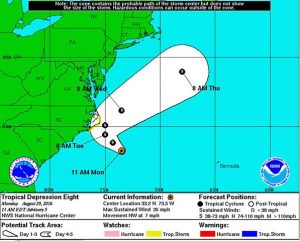
Mid Atlantic: Coast Guard urges mariners, beachgoers to prepare for severe weather
The 5th Coast Guard District is advising mariners and swimmers throughout the mid-Atlantic region Monday to use caution this week. Tropical Depressions Eight and Nine are forecasted to impact beaches and waterways from North Carolina to New Jersey as they transit the Mid-Atlantic region during the next several days. Tropical storm-force winds are possible during the next 48 hours. “Our primary concern is ensuring the safety of life at sea,” said Capt. William Lane, Fifth District Chief of Response. “We are encouraging all mariners, personal watercraft users, and beachgoers to make safety a priority as these two weather systems pass through the region.” Mariners are warned to take the following precautions to protect their vessels and their crews: Read the rest here 18:00
Is there really a Manatee swimming around Cape Cod??
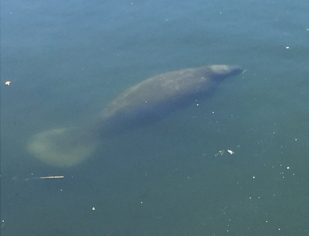 The International Fund for Animal Welfare says there have been several sightings of a manatee around Cape Cod. The manatee has reportedly been spotted off Nantucket, at Dowses Beach in Osterville and Oyster Pond in Chatham. “Here on the Cape it’s not very common,” IFAW research member Misty Niemeyer tells The Cape Cod Times. “We aren’t really quite sure what they are doing.” Anyone who spots the manatee should stay away and call the IFAW at 508-743-9548. Link 16:03
The International Fund for Animal Welfare says there have been several sightings of a manatee around Cape Cod. The manatee has reportedly been spotted off Nantucket, at Dowses Beach in Osterville and Oyster Pond in Chatham. “Here on the Cape it’s not very common,” IFAW research member Misty Niemeyer tells The Cape Cod Times. “We aren’t really quite sure what they are doing.” Anyone who spots the manatee should stay away and call the IFAW at 508-743-9548. Link 16:03
Western and Central Pacific Fisheries Commission discusses fishing limit of Pacific bluefin tuna
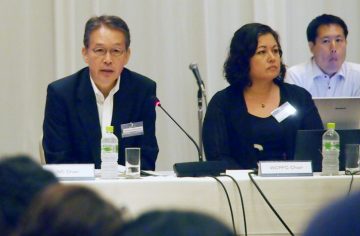 An international fisheries commission began discussing details of fishing restrictions for bluefin tuna in the northern Pacific at a meeting in southwestern Japan on Monday amid concerns about overfishing. At a subcommittee meeting of the Western and Central Pacific Fisheries Commission held through Friday in the city of Fukuoka, participants are discussing the possibility of invoking a catch limit based on Japan’s proposal. The panel is discussing specific control measures with an eye to reaching a formal agreement within this year. Meanwhile, nongovernmental organizations Greenpeace and the Pew Charitable Trusts have issued a statement requesting the WCPFC to immediately implement a 2-year moratorium on all commercial fishing for Pacific bluefin tuna. Read the rest here 15:10
An international fisheries commission began discussing details of fishing restrictions for bluefin tuna in the northern Pacific at a meeting in southwestern Japan on Monday amid concerns about overfishing. At a subcommittee meeting of the Western and Central Pacific Fisheries Commission held through Friday in the city of Fukuoka, participants are discussing the possibility of invoking a catch limit based on Japan’s proposal. The panel is discussing specific control measures with an eye to reaching a formal agreement within this year. Meanwhile, nongovernmental organizations Greenpeace and the Pew Charitable Trusts have issued a statement requesting the WCPFC to immediately implement a 2-year moratorium on all commercial fishing for Pacific bluefin tuna. Read the rest here 15:10



































